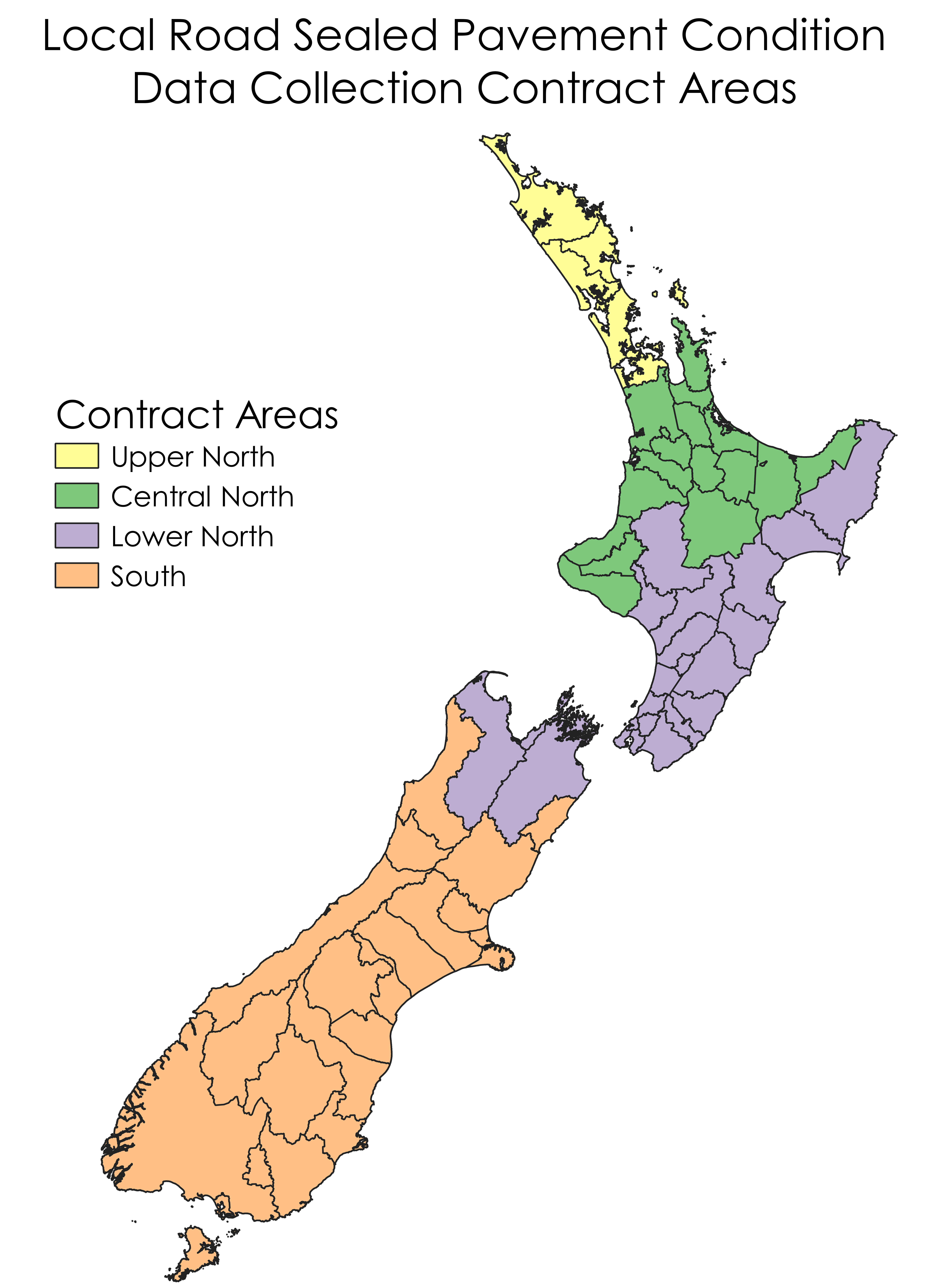Consistent condition data is increasingly important in the New Zealand transport sector's approach to lifecycle asset management, benchmarking, performance management and investment decision-making.
Consistent condition data is increasingly important in the transport sector's approach to lifecycle asset management, benchmarking, performance management and investment decision making. In 2021-24, approximately $1.5 billion will be spent on local road sealed pavement maintenance, resurfacing and rehabilitation.
The current approach to asset condition data collection across local road networks is outdated, inefficient, variable and does not reflect best practices. This results in inconsistent and non-comparable outputs across local authorities which hampers national investment decision making.
The REG Consistent Condition Data Collection (CCDC) project, in conjunction with the sector, will improve both local and national asset management planning and decision making by:
The expected benefits include:
CCDC FAQs – August 2024 [PDF, 236 KB]
The CCDC programme consists of three projects:
In September 2023 the Waka Kotahi Board approved the CCDC sealed roads project as a nationally delivered activity receiving 100% National Land Transport Fund support for the 2024-27 NLTP. This replaces the previous approach of RCAs co-funding their surveys.
The CCDC project requires local authority RCAs to adopt automated condition inspections of their sealed road networks. This is a change from the current manual (visual) rating requirement. These changes are captured in Work Category 151 describing the general management and control of the road network and management of road infrastructure.
WC151 Network & Asset Management(external link)
The CCDC project team, supported by a Sector Technical Reference Group, has compiled standards and specifications for automated condition data collection requirements, and the standards and specifications for data collection survey systems, equipment and software.
These requirements were presented to the existing data collection supplier market for feedback in mid-2023 and have been adopted as the contract specification for procurement of suppliers to the Local Road Sealed Pavement Condition Data Collection Data Collection Contracts delivered by REG on behalf of NZTA.
REG went to market in November 2023 to procure suppliers to provide the annual automated condition data collection surveys. These are 6-year contracts covering data collection on the entire sealed local road network.
All high class roads (primary collectors and above) will be surveyed annually. The contractors will confirm the low class roads (secondary collectors and below) with RCAs before surveys start.
Details to be confirmed by RCAs prior to surveys include:
During the surveys, event codes will be assigned to elements of the road where there is a location-based change in characteristic, for example speed bumps, rail crossings, or roadworks.

The data collection contracts cover four geographic areas with contractors appointed for each area:
CCDC survey schedule – September 2024 to June 2025 [PDF, 59 KB]
Consistent Condition Data Collection – local sealed roads quality assurance [PDF, 437 KB]
The CCDC contract is delivered under the new risk-based approach to temporary traffic management.
This is directed by the NZ Guide to Temporary Traffic Management as well as the Practice Note and Good Practice Guide, developed by NZTA for vehicle based surveys and data collection operations on State highways and local roads. These documents set out the process for identifying and managing safety risks.
NZ guide to temporary traffic management
Drainage assets are currently not included in automated condition data collection but are recognised as a critical asset for the sealed road network. This phase will seek to:
Some RCAs collect pavement strength data, however, there is a lack of consistency between data collection equipment types, sampling, methodology and processing algorithms. This issue is unlikely to be resolved nationally, so the likely scenario is internal consistency at the TLA level but a lack of consistency and comparability between TLAs using different providers and/or equipment.
Pavement strength differs from other condition data collection as the output is less a direct measurement (apart from FWD) and more a result of data processing via algorithms. Given that different equipment types collect different datasets and the proprietary nature of the algorithms, there is currently limited clarity on how robust or valid the outputs are, and how comparable they are between providers and/or equipment.
This phase will seek to:
As this work progresses, consideration will be given to providing support to RCAs to access pavement strength services, such as through the annual automated data collection or local state highway contracts to avoid RCAs entering multiple separate engagements with suppliers.
Some RCAs currently use excess capacity from the State Highway SCRIM (Sideway-force Coefficient Routine Investigation Machine) to collect skid resistance information on their networks.
No introduction of minimum requirements for skid resistance is proposed, however, REG will work with the sector to develop national guidance to improve the quality and consistency of skid resistance data collection. This guidance will include when/where a TLA should look to collect this data, and how this data can be used to improve safety and skid resistance management.
REG will support TLAs with access to skid resistance services through the local state highway contracts.
This project is included as part of the REG programme submission for the 2024-27 National Land Transport Programme. A detailed scope of work will be developed if approved.
This project is included as part of the REG programme submission for the 2024-27 National Land Transport Programme. A detailed scope of work will be developed if approved.